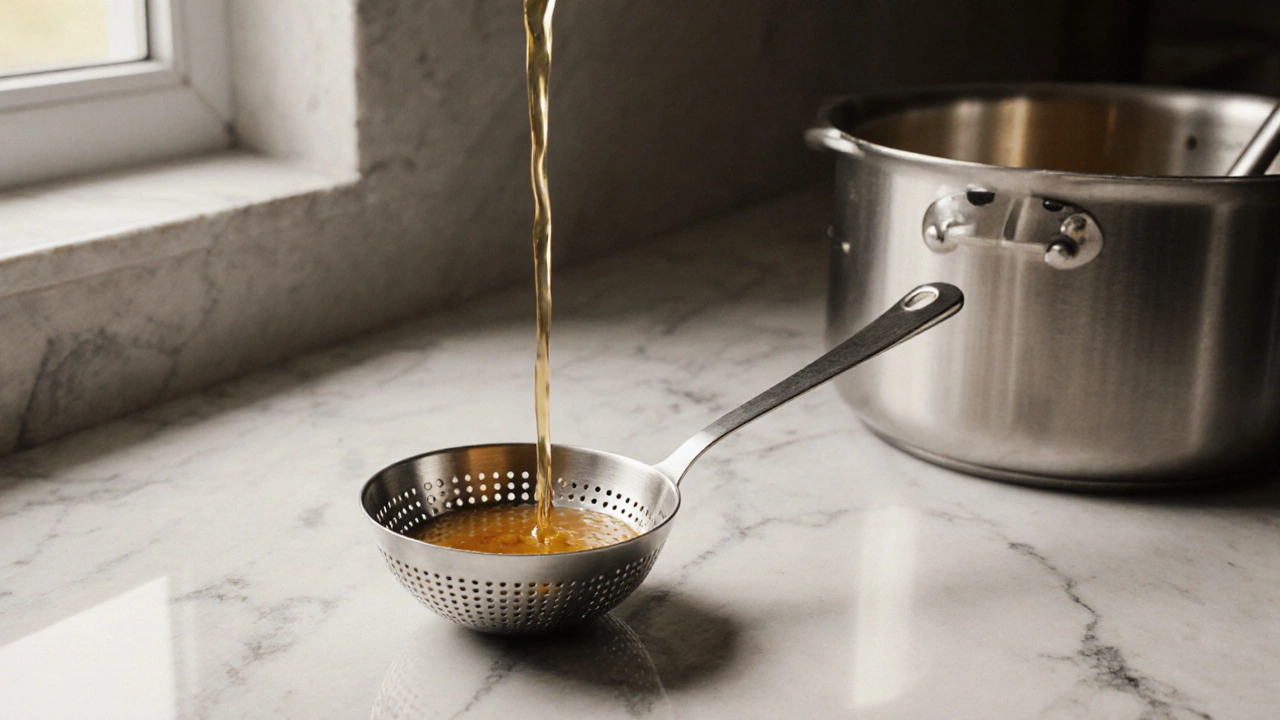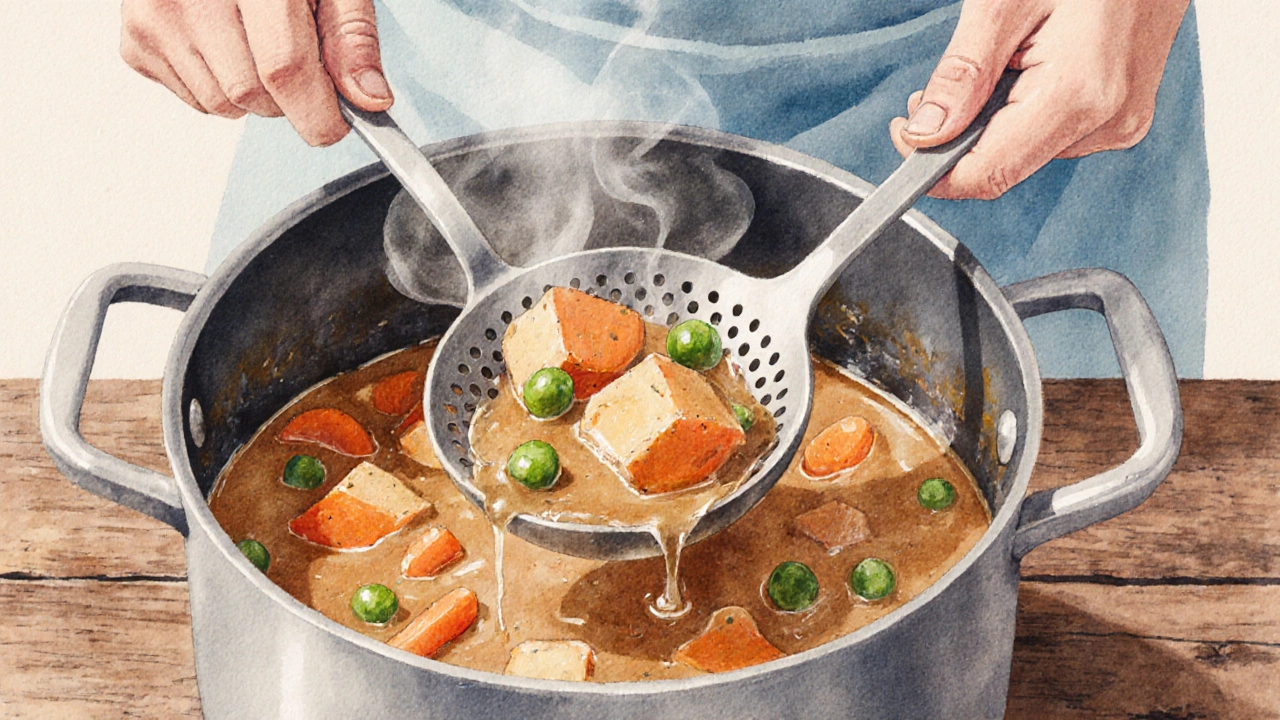Ladle with Holes: What It’s Called and When to Use It

Ever grabbed a ladle that seemed to have tiny openings and wondered what it’s actually called? That tool is a perforated ladle a ladle equipped with holes or slots that let broth or sauce drain while keeping the solid pieces in the bowl. Knowing the right name helps you shop smarter, use it correctly, and keep it in good shape for years.
What Exactly Is a Perforated Ladle?
A perforated ladle is a serving utensil that looks like a regular ladle but has a series of holes-often arranged in a circular pattern-through the bowl. The holes can be uniform or vary in size, and they can be cut, drilled, or formed during manufacturing. The main purpose is to separate liquids from solids in one smooth motion, making it ideal for soups, stews, sauces, and even pasta water.
How It Differs From Other Kitchen Spoons
- Slotted spoon: Usually smaller, with deeper slots rather than round holes, designed for flipping or retrieving items from a pan.
- Soup ladle: A solid bowl, perfect for serving broth without any need to strain.
- Serving spoon: Flat or shallow, meant for serving side dishes, not for draining.
In short, the perforated ladle bridges the gap between a solid ladle and a slotted spoon, offering the convenience of a built‑in strain.
When to Reach for a Perforated Ladle
Here are the top scenarios where a perforated ladle shines:
- Straining soups and stews: Scoop up hearty chunks while letting the broth flow back into the pot.
- Serving boiled vegetables: Lift the veggies out, letting excess water drip away.
- Plating sauces: Drizzle a thin layer of sauce onto a plate and retrieve the solids in one motion.
- Removing fried foods: Drain oil quickly without needing a separate colander.
Because it combines scooping and draining, you’ll cut down on dishes and speed up service-great for both home cooks and busy restaurant kitchens.

Choosing the Right Material
Most perforated ladles are made from stainless steel, silicone‑coated metal, or heat‑resistant plastic. Each material brings its own pros and cons:
- Stainless steel: Durable, dishwasher‑safe, and retains heat, but can get hot to the touch.
- Silicone‑coated metal: Provides a cool grip and non‑stick surface, though the coating can wear over time.
- Heat‑resistant plastic: Lightweight and inexpensive, but may warp under high temperatures.
If you often work with boiling liquids, stainless steel with a silicone handle offers the best blend of strength and comfort.
Care & Maintenance Tips
To keep your perforated ladle performing:
- Rinse immediately after use to prevent food particles from hardening in the holes.
- Use a soft brush or a small bottle brush to clean the interior of the bowl.
- If you notice stubborn residues, soak the ladle in warm, soapy water for 10‑15 minutes.
- Avoid abrasive pads that can scratch the surface, especially on silicone‑coated models.
- Dry thoroughly to prevent water spots, especially on stainless steel variants.
Buying Guide: What to Look For
| Feature | Perforated Ladle | Solid Ladle | Slotted Spoon |
|---|---|---|---|
| Typical Material | Stainless steel with silicone handle | Stainless steel or enamel | Stainless steel or nylon |
| Hole/Slot Size | 2‑5 mm round holes | None (solid) | Deep slots, 5‑10 mm wide |
| Ideal Use | Draining soups, sauces, boiled veggies | Serving broth, punch, pureed soups | Flipping, retrieving items from pans |
| Typical Price (USD) | $12‑$25 | $8‑$20 | $6‑$15 |
Pick a model that matches the size of the pots you use most. A 6‑inch bowl works well for standard stock pots, while a larger 8‑inch version is handy for big‑batch soups.
Quick Checklist Before Buying
- Material: stainless steel + silicone handle for durability.
- Hole size: 2‑4 mm for most home‑cooking tasks.
- Bowl capacity: 5‑8 oz for typical soup servings.
- Handle comfort: heat‑resistant grip.
- Dishwasher safe: saves time.
Common Mistakes to Avoid
Even seasoned cooks slip up sometimes. Here are pitfalls and how to dodge them:
- Using a perforated ladle for thin sauces: the holes can let valuable sauce run off. Stick with a solid ladle for delicate liquids.
- Choosing a ladle with too‑large holes: you’ll lose chunks you actually want to keep.
- Storing it upside down without a rack: water can pool in the holes, leading to rust on low‑grade steel.
Frequently Asked Questions
What is the official name for a ladle with holes?
The correct term is perforated ladle. Some retailers also label it as a "draining ladle" or "slotted ladle," but perforated ladle is the most precise.
Can I use a perforated ladle for pasta water?
Yes. Scoop the pasta, let the water drain through the holes, and you’ll have perfectly drained noodles without a separate colander.
Is stainless steel the best material?
For most home cooks, stainless steel with a silicone grip offers durability, heat resistance, and easy cleaning. If you prefer a lighter tool, heat‑resistant plastic works, but it may not last as long.
How do I clean the tiny holes effectively?
Rinse right after use, then use a small bottle brush or a toothbrush to scrub inside the bowl. For stubborn bits, soak in warm soapy water for 10‑15 minutes.
What size holes should I look for?
A hole diameter of 2‑4 mm works well for most soups and sauces. Larger holes can cause loss of food pieces; smaller holes may clog quickly.
Armed with the right name-perforated ladle-you can now shop confidently, use it effectively, and keep it in tip‑top shape for years to come.